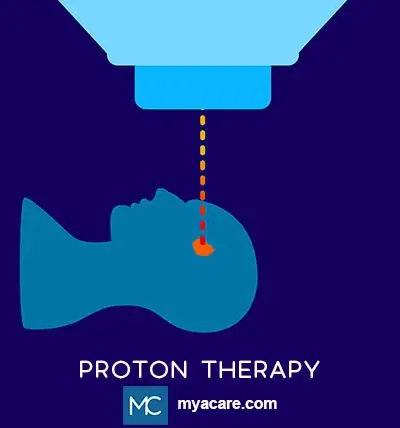What Is Proton Therapy?

The most common forms of cancer treatment currently being used include chemotherapy, radiotherapy, surgery and immunotherapy, each with their own subcategories and number of conditions under which they should or shouldn’t be used. This article will focus on a subcategory of radiotherapy called “proton therapy” (PT), a relatively new and underutilized method for delivering a dose of radiation to the tumor mass that in some cases has demonstrated to facilitate a survival rate of 95% [1,2].
Proton Therapy depends on complex equipment and high-level physics, but the basic technique is not too difficult to understand, basically, the problem with x-ray radiotherapy (the most common form of radiotherapy) is that x-rays are applied in a way that irradiates a lot of healthy tissue surrounding the tumor which has a considerably negative effect for the patient. Proton Therapy instead uses a very localized beam of high-energy particles to deliver a larger dose of radiation to a smaller area with more precision thus enhancing the effect over the tumor and reducing the side effects [1].

The Technique
As we mentioned, the science behind Proton Therapy is too complex to properly explain here, however a good way to describe it would be the following: A proton is a positively charged subatomic particle found at the center of every atom. To create and control a proton beam you need a specialized particle accelerator (cyclotron or synchrotron) to give a lot of energy to the proton and direct them to a specific location using carefully calibrated magnets. The beam that comes from the machine can then be given a certain amount of energy and orientation to impact the tumor with great precision [1,3].
Another aspect of the technique involves the proper visualization of the tumor using computerized tomography or other similar methods and the placement of the patient in a custom cage or scaffold to prevent movement during the procedure. Without these last 2 elements PT cannot be applied [1,4].
Precedents
Proton therapy has slowly been gaining ground as a viable treatment option for cancer patients since the 70’s when the first cases showed some promise, however, it wasn’t until the 90’s that this type of treatment was commonly available in hospitals [5].
Because of the specialized equipment needed and the limited number of hospitals actually offering the service. Please use the Mya Care search engine to search for hospitals offering Proton Therapy worldwide.
When is Most Effective?
Proton Therapy is recommended for cases of tumors in children and young adults because they are much more sensitive to radiation. The type of cancer most susceptible to PT include [4]:
Most head and neck tumors
- Brain
- Skull
- Hepatocellular carcinoma
- Retroperitoneal sarcomas
Is it Actually Better Than X-Ray Radiotherapy?
The short answer is that we simply don’t have enough quality information to answer that yet. Not many peer reviewed studies have explored this comparison with sufficient rigorousness causing conflicting results. Some studies report no difference while others claim Proton Therapy can provide very high survival rates, but most studies focus on specific types of tumor and have methodological issues that make impossible to extrapolate their findings to get a formal conclusion [4,2].
Conclusion
Proton Therapy is a specialized form of treatment that simply is not available for everybody who may need it. Some forms of solid and easily observable tumors are particularly vulnerable to it which justifies its existence and continuation.
For pediatric tumors, this might be the best alternative and is likely to be considered by any oncologist dealing with such cases.
Mya Care has partnered with some of the best cancer hospitals in Spain. Here is a list of hospitals on Mya Care. If you would like to send an inquiry to one of these hospitals, please contact us and we will be happy to assist you:
Spain
Quirónsalud Hospital Group is made up of over 100 hospitals, institutes, and other health centers located in 13 regions of Spain. Some of the most noteworthy include Centro Médico Teknon, Hospital Ruber Internacional, Hospital Quirónsalud Marbella, Hospital Universitario Quirónsalud Madrid, Hospital Quirónsalud Barcelona.
They recently introduced their Proton Therapy Center showcasing cutting-edge technology used by top medical staff. The new Quirónsalud Proton Therapy Centre is a modern center, equipped with cutting-edge medical technology, where everything is designed to the finest detail to offer each patient the highest level of comfort and convenience during their treatment.
References:
Featured Blogs



